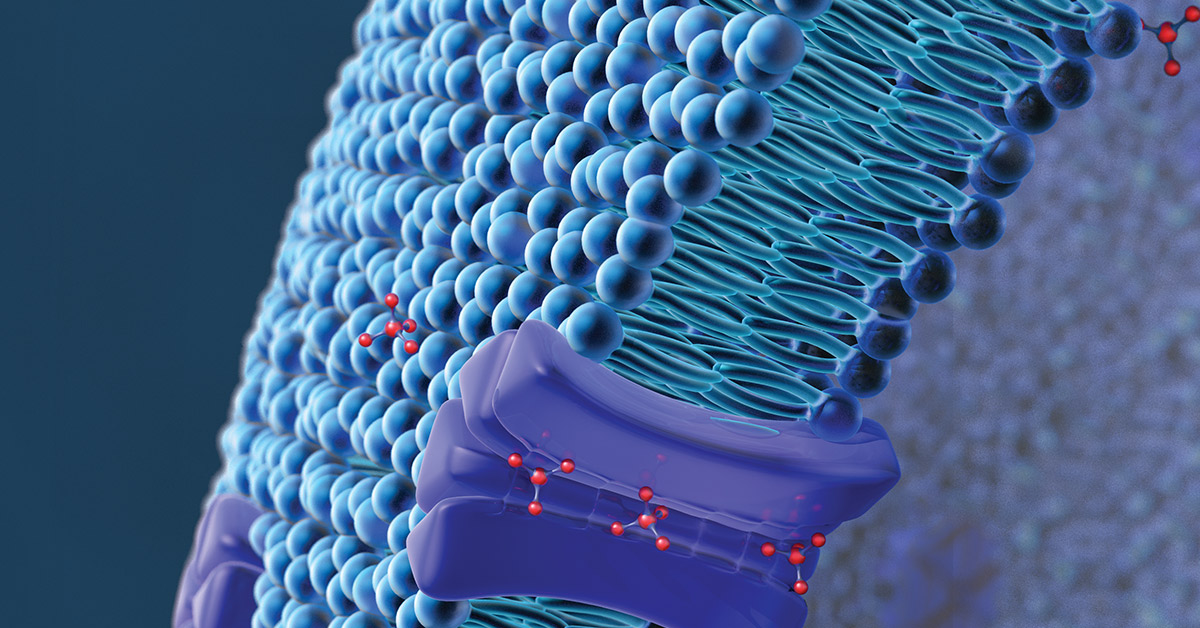We offer definitive in vitro transporter studies to determine substrate and inhibition potential of a drug candidate with clinically-relevant transporters using validated, industry-accepted test systems. Definitive in vitro Drug Transporter Substrate & Inhibition studies use regulatory guidance-compliant test systems and study designs to investigate a compound’s potential to interact with known uptake (SLC, solute carrier) and efflux (ABC, ATP binding cassette) transporters, precipitating a potential drug-drug interaction (DDI).

In Vitro Drug Transporter Services to Support Preclinical Drug Development
You can now request quotes for our research services on BioIVT.com!
Whether you need a single assay or a complete ADME program, BioIVT’s experts will help design and implement the appropriate studies for your drug and research objectives. View BioIVT’s comprehensive portfolio of ADME research services.
Our Approach to Drug Transport
Transporters have become increasingly important in drug development due to the major role they play in absorption, distribution and excretion (ADME) of endogenous and exogenous compounds. Additionally, potential for transporter-mediated drug-drug interactions (DDI) is associated with potential toxicological and pharmacological consequences. As evidenced in numerous publications, the effects of transporters on the pharmacokinetics of several drugs, and associated DDI, have been reported. Consequently, recent guidance documents released by the US Food and Drug Administration (FDA), European Medicines Agency (EMA) and Pharmaceuticals & Medical Devices Agency (PMDA) of Japan emphasize the importance of evaluating the potential of new drug candidates for transporter-mediated DDI with a determination of victim (substrate) and perpetrator (inhibition) potential.
You can now request quotes for our research services on BioIVT.com!
Whether you need a single assay or a complete ADME program, BioIVT’s experts will help design and implement the appropriate studies for your drug and research objectives. View BioIVT’s comprehensive portfolio of ADME research services.

In Vitro Preclinical Transporter Assays We Offer
Our team conducts the following assays to evaluate your drug candidate’s interaction with drug transporters:
Substrate Potential
Substrate potential assays are designed to address the FDA’s directive to “determine if the investigational drug is a substrate of a transporter,” to inform risk of DDI potential, explain observations of increased toxicity or altered efficacy, and to determine if clinical investigation is necessary.
Drug Transporter Inhibition Potential
Drug Transporter Inhibition assays are designed to address the FDA’s directive to “determine if the investigational drug is an inhibitor of a transporter,” in order to evaluate capacity to act as a perpetrator in potential transporter-mediated DDIs.
Uptake & Efflux Study Options
We work with both uptake (SLC) and efflux (ABC) transporters in different test systems and assay designs according to regulatory guidance:
SLC (Uptake) Transporter Studies
Uptake Transporter assays assess SLC (solute carrier) transporter families for potential drug-drug interactions involving the drug candidate as a substrate or inhibitor of relevant uptake transporters using appropriate transporter-expressing cells as a test system.
ABC (Efflux) Transporter Studies
Efflux Transporter assays assess ABC (ATP binding cassette) transporter families for potential drug-drug interactions involving the drug candidate as a substrate or inhibitor of relevant efflux transporters using appropriate test systems.
Features of Our Drug Transport Study Design
- An extensive selection of transporters and assays
- Multiple test systems for the major transporters, from membranes to in vivo models
- Expert guidance for compound development custom-designed for your needs
- Communication and review of all study materials performed by a study director
Known Clinically Relevant Transporter DDIs
The following charts show a partial list of compounds that have been implicated in transporter-based clinically relevant drug-drug interactions as either a substrate or inhibitor.
P-gp Transporter
| INHIBITORS | SUBSTRATES |
|---|---|
| Clarithromycin Cyclosporine Erythromycin Itraconazole Quinidine Ritonavir Telithromycin Verapamil | Aliskiren Digoxin Docetaxel Fexofenadine Paclitaxel Ritonavir Talinolol Vinblastine |
BCRP Transporter
| INHIBITORS | SUBSTRATES |
|---|---|
| Elacridar (GF120918) | Pitavastatin Rosuvastatin Topotecan |
OATP1B1 Transporter
| INHIBITORS | SUBSTRATES |
|---|---|
| Atazanavir Clarithromycin Cyclosporine Gemfibrozil Glibenclamide Lopinavir Rifampin | Bosentan Cerivastatin Pravastatin Rifampin Rosuvastatin Simvastatin Valsartan |
OATP1B3 Transporter
| INHIBITORS | SUBSTRATES |
|---|---|
| Atazanavir Clarithromycin Cyclosporine Gemfibrozil Lopinavir Rifampin | Bosentan Paclitaxel Pravastatin Rifampin Rosuvastatin Valsartan |
OATP2B1 Transporter
| INHIBITORS | SUBSTRATES |
|---|---|
| Cyclosporine Gemfibrozil Quercetin Grapefruit juice Orange juice | Aliskiren Atorvastatin Pravastatin Pitavastatin Rosuvastatin |
OATP1A2 Transporter
| INHIBITORS | SUBSTRATES |
|---|---|
| Verapamil Naringin Quercetin Grapefruit juice Orange juice | Atenolol Celiprolol Ciprofloxacin Fexofenadine Pravastatin |
OAT1 Transporter
| INHIBITORS | SUBSTRATES |
|---|---|
| Indomethacin Mycophenolate Olmesartan Probenecid | Adefovir Captopril Cidofovir Furosemide |
OAT3 Transporter
| INHIBITORS | SUBSTRATES |
|---|---|
| Gemfibrozil Indomethacin Mycophenolate Olmesartan Probenecid Salicylate | Benzylpenicillin Cefotiam Furosemide Methotrexate Olmesartan Pravastatin |
OCT2 Transporter
| Inhibitors | Substrates |
|---|---|
| Bisoprolol Carvedilol Cimetidine Procainamide Ranitidine Trimethoprim | Amatadine Cimetidine Cisplatin Lamivudine Metformin Ranitidine |
MATE1 Transporter
| INHIBITORS | SUBSTRATES |
|---|---|
| Cimetidine Pyrmethamine Quinidine Rapamycin | Cephalexin Cimetidine Metformin Procainamide |
Planning Your Drug Transporter Studies
To plan transporter studies it is best to work backwards from FDA clinical guidance since timing is not explicitly mentioned in the in vitro guidance form 2020. The guidance says that before a drug is to be administered to patients in clinical trials, there should be “enough DDI information to prevent patients from being unnecessarily excluded.”
The International Transporters Consortium (ITC) recommends that the choice of transporters to be investigated should be driven by scientific evidence, and should be evaluated either prospectively or retrospectively as described in published literature or guidance. For example, hepatic OCT1 is recommended for prospective evaluation for inhibition and substrate potential, and intestinal OAT2B1 is recommended for retrospective evaluations in specific instances of DDIs. OAT2 is recognized to be an important transporter in the uptake of some high permeability acidic and zwitterionic drugs (Extended Clearance Classification System (ECCS) Class 1A), but evidence is lacking for a specific recommendation so drug developers are encouraged to “follow the evidence” to plan studies. Read more about current regulatory expectations and emerging transporters of importance in a digest of our 2019 Drug Transporters Webinar.
Transporters, in concert with metabolizing enzymes, can govern a drug’s disposition and pharmacological action. Conversely, a drug can also modulate transporter expression or activity, resulting in altered disposition of endogenous (e.g., creatinine, glucose) or exogenous substances
FDA 2020 “In Vitro Drug Interaction Studies — Cytochrome P450 Enzyme- and Transporter-Mediated Drug Interactions Guidance for Industry”
Drug Transporter Related Resources:
- Access ADME™: All drug transporter-related scientific resources
- 2019 Webinar: Drug Transporter Regulatory Considerations webinar by VP of Consulting Dr. Brian Ogilvie
- Blog Post: Conduct of In Vitro Drug Transporter Assays blog post
- Scientific Poster: “Comparison of IC50 Values for Prototypical and Clinically-Relevant Probe Substrates and Inhibitors of Selected Uptake and Efflux Transporters”
- Data Packet: Drug Transport Validation

